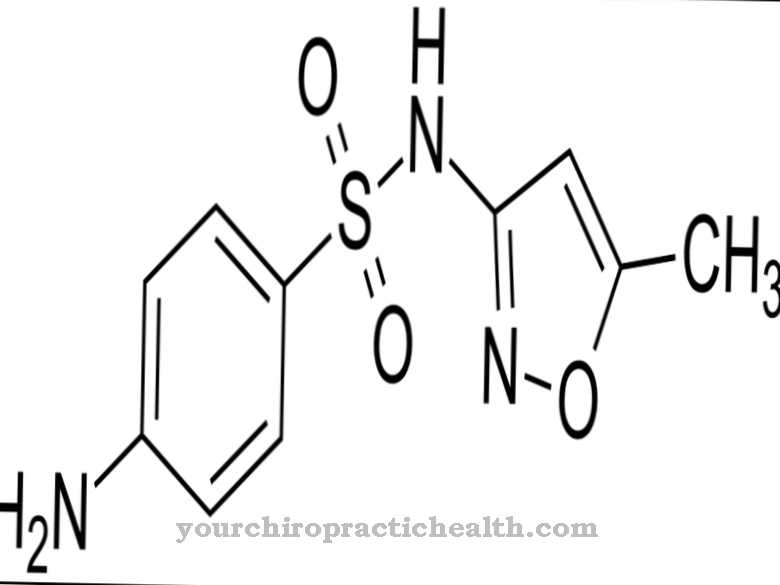Monobactams are a group of antibiotics that are often used as reserve medication or in combination with other antibiotics. The best-known representative is the antibiotic aztreonam.
What is monobactam?

Monobactams are semisynthetic antibiotics. Gram-negative bacteria produce a substance that is then synthetically modified. Like other ß-lactam antibiotics, monobactam contains a monocyclic ß-lactam ring. ß-Lactam is a cyclic organic chemical compound that contains an amide bond in the ring. However, monobactams do not contain another fused ring. This is a typical property of ß-lactam antibiotics.
Monobactams are stable towards ß-lactamase. ß-lactamases are enzymes that are produced by various bacteria. They play a crucial role in the development of antibiotic resistance by bacteria. However, antibiotics from the group of monobactams can be cleaved by Extended Spectrum ß-Lactamases (ESBL). This means that ESBL-producing bacteria such as E. coli and Klebsiella are resistant to monobactams.
Pharmacological effect
Monobactams have a bactericidal effect. They inhibit the synthesis of the cell wall of bacteria. The cell wall is vital for bacteria. They have a very high osmotic particle concentration within their cell plasma. If the cell wall is no longer present or damaged, water flows into the cell interior of the bacteria. They swell, so that after a while the plasma lemma, a cell membrane that surrounds the cytoplasm, tears. The bacteria burst and perish.
The spectrum of activity of the monobactams is quite broad. They work mainly in the gram-negative area. Gram-negative bacteria can be stained red in the Gram stain. In contrast to gram-positive bacteria, in addition to a thin layer of peptidoglycan made of murein, they also have another outer cell membrane. Gram-negative pathogens include, for example, staphylococci, streptococci, mycobacteria, nocardia, listeria and clostridia.
Monobactams have no effects on gram-positive pathogens such as Legionella, Campylobacter, Helicobacter pylori, Enterobacteria, Borrelia and Chlamydia. Even anaerobes cannot be treated with antibiotics from this group. Since monobactams cannot be absorbed from the gastrointestinal tract, they must be administered parenterally. This means that they are usually injected into the vein. Intramuscular or inhalative administration is also possible.
The bioavailability of monobactams is almost 100 percent. The metabolism takes place in the liver. The kidneys then excrete the resulting metabolites.
Medical application & use
Monobactams mainly act as reserve antibiotics. These special antibiotics may only be used for infections with resistant pathogens. In the case of severe infections, they are also used directly if an infestation by resistant pathogens is to be expected. It should be noted that reserve antibiotics are by no means better than standard antibiotics. Often they even have a worse effect and are fraught with more side effects. However, they are still effective against resistant pathogens.
Monobactams are used in particular in the treatment of complicated urinary tract infections or in intra-abdominal infections. For this purpose, the drugs are combined with the antibiotics metronidazole or clindamycin. The effect of the monobactams must also be confirmed by an antibiogram.
The main indication for the use of aztreonam, the main representative of monobactams, is chronic lung infection with the pathogen Pseudomonas aeruginosa in patients with cystic fibrosis. Cystic fibrosis is a hereditary disease that is characterized by the production of a thick secretion by the body's exocrine glands. Antibiotics from the monobactam group are also used in patients with an allergy to penicillin or cephalosporin.
Risks & side effects
Monobactams should not be used in children under 18 years of age. Its use is also contraindicated in patients with impaired kidney function or in patients who are allergic to beta-lactam antibiotics.
Adverse drug effects include coughing and wheezing. Pain in the throat or larynx can also occur. Other side effects include nasal congestion and the discharge of thin to slimy nasal secretions.
Some patients also have a fever and chest discomfort while taking monobactams. Bronchial spasms can also be a possible side effect. A rash may also develop during treatment.













.jpg)

.jpg)
.jpg)











.jpg)